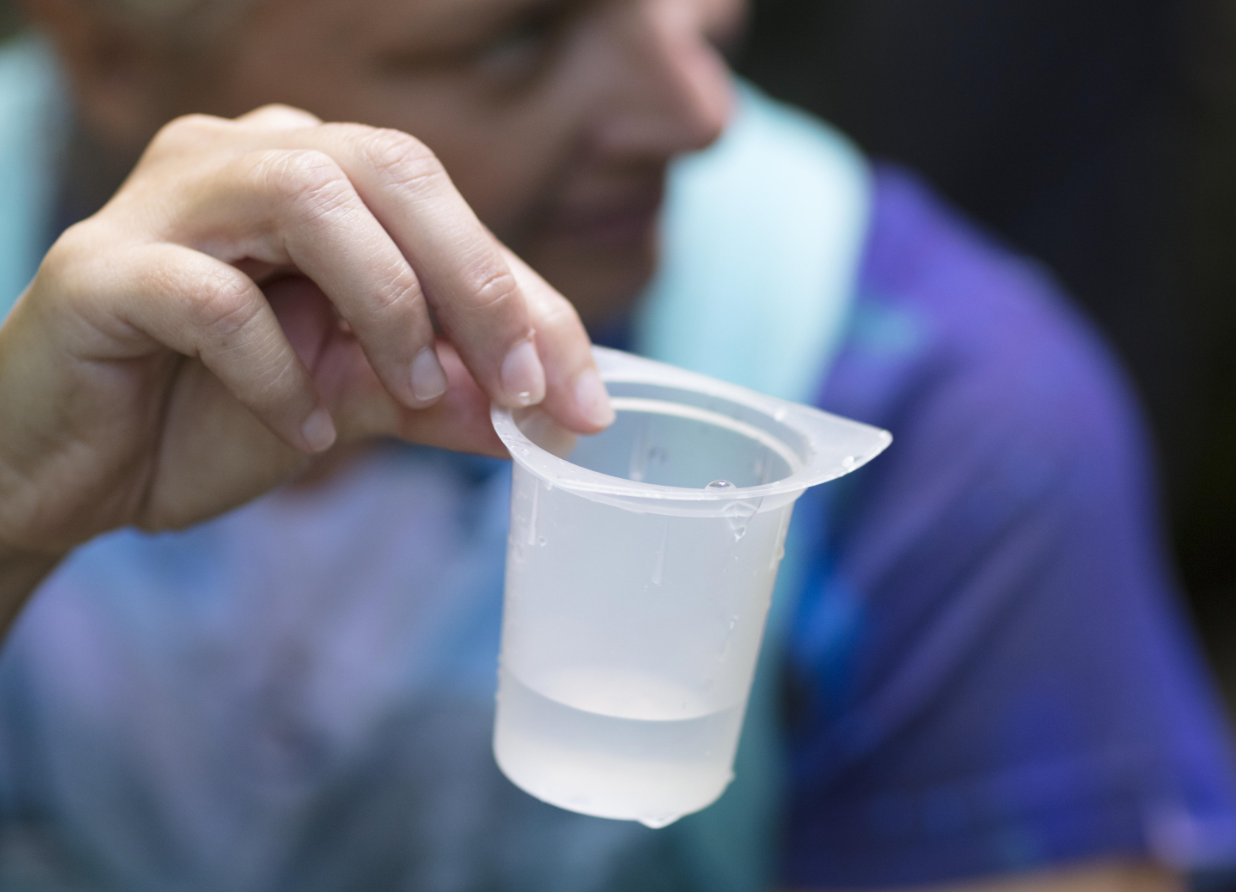
By Andy Balaskovitz, Energy News Network, through the Institute for Nonprofit News network
State environmental officials are reviewing claims by multiple West Michigan residents that a coal ash storage site near Lake Michigan is contaminating drinking water wells.
The Michigan chapter of the Sierra Club this summer helped four homes near the J.H. Campbell coal plant outside Holland obtain water samples that tested for contaminants linked with coal ash pollution, including arsenic and lead. One home’s well tested arsenic levels at 2.5 times the federal safe level for drinking, according to a report provided to the Energy News Network.
“Certainly we’re looking into this and hope to get a look at their data,” said Margie Ring, solid waste engineering coordinator for the state Department of Environment, Great Lakes and Energy.
Ring said this is the first instance the department has heard from residents claiming their wells may be contaminated from coal ash.
Michigan has 37 coal ash ponds statewide, a majority of which show groundwater contamination levels exceeding federal pollution standards, according to a report last year by the Michigan Environmental Council. The four storage pits at Campbell are inactive, and the plant’s coal ash waste is sent to an onsite landfill or is reused in other products.
State officials and Consumers Energy, the plant owner, have monitored groundwater around the Campbell plant for years and are planning to remediate pollution stemming from coal ash storage.
Consumers has acknowledged coal ash residuals in groundwater at the facility, but utility and state officials say they have no evidence that it has migrated beyond the company’s property.
“We don’t believe there are any impacts to groundwater off-site in terms of the drinking water supplies based on the information we have,” Ring said. She declined to comment on whether more residents should have their wells tested, saying more analysis is needed of the data so far.
The Sierra Club says its recent testing — which advocates say has been shared with the state over the past month — disputes the state’s and Consumers’ claims.
Jan O’Connell, development director with the Michigan Sierra Club, said two of the four homes tested with elevated levels of arsenic. Others tested for elevated levels of heavy metals radium and barium.
“We picked four locations to get a feel of what might be there,” O’Connell said. Consumers and the state say the contamination is staying within the plant property boundary, “but water in an aquifer doesn’t really know where property boundaries are,” O’Connell said.
Consumers has removed all of its coal ash storage ponds from the Campbell site and has installed a double-lined landfill there. Officials say the utility is required to monitor the site for 30 years after the plant closes in 2040.
“Today, Consumers Energy proactively monitors groundwater at more than 100 well locations on our site, with samples analyzed by a third-party laboratory,” Consumers spokesperson Roger Morgenstern said in a statement. “Our data indicates no exceedances of arsenic, lead or radium above drinking water standards migrating beyond Consumers Energy’s property boundary.”
Meanwhile, the Sierra Club and other clean energy groups are pushing for a closure date earlier than 2040. O’Connell asked Consumers CEO Patti Poppe at a recent event in Grand Rapids to consider closing it earlier than planned.
Poppe said a key component to replacing the remaining coal units is energy efficiency, which will take time to ramp up by 2030.
“We’re trying to avoid building two more [natural gas] power plants,” Poppe said. “If we go faster, we run the risk of not replacing them with demand response and energy efficiency. I stand by our plan and the timing of it. If we could go faster, we would.”
Better mapping
Earlier this year, advocacy groups published data on coal ash contamination at storage sites around the country, finding most of them polluting groundwater. Late last year, the Michigan Legislature passed a bill creating a statewide coal ash permitting program that mirrors 2015 federal rules. The state program is awaiting approval by the U.S. Environmental Protection Agency.
While Ring said it’s not impossible coal ash contaminants might be reaching drinking water wells, she said it isn’t probable at least around the Campbell site. Further study is needed about well locations and how they’re impacted by geology.
“If we suspected contamination was going offsite onto someone’s private property, we’d notify them,” Ring said.
Charlotte Jameson, energy policy and legislative affairs director with the Michigan Environmental Council, said while groundwater contamination from coal ash has been well documented over the past year following 2015 federal regulations on monitoring, “the link has not been made from contaminated groundwater to contaminated drinking water. We don’t have enough evidence, either, to form that link.”
Ring said the Campbell site has had “extensive groundwater monitoring” over the years that have shown previous releases from unlined storage sites. That required a remedial action plan.
Campbell is unique from other large coal plants in that surrounding neighbors are on private drinking water wells, Jameson said.
Jameson said residents should be “moderately concerned. Further investigation needs to be done with the state to see whether it impacts drinking water.”
She also recognized that coal ash contamination may fall lower on state officials’ drinking-water priorities given ongoing concerns stemming from lead contamination in Flint and statewide PFAS contamination from industrial sites.
“I think this is the next frontier in how the state is looking at protecting drinking water,” Jameson said.
Jameson said the Campbell plant shows the need for a statewide map that shows how groundwater flows.
“Michigan has not comprehensively mapped groundwater. It’s hard to know if we have a plume,” Jameson said.
Ring said such statewide groundwater mapping would be useful but difficult to obtain, given local variations, land type and geology.
“All information is great to have,” Ring said, “but we can’t always get it.”
This article, first published in Energy News Network, is republished here through Great Lakes Now’s membership in the Institute for Nonprofit News, a network of more than 200 nonprofit newsrooms across the U.S., working to strengthen the sources of trusted news for thousands of diverse communities.
Featured Image: Water testing at a treatment facility, Photo by Lance Cheung, USDA via wikimedia




